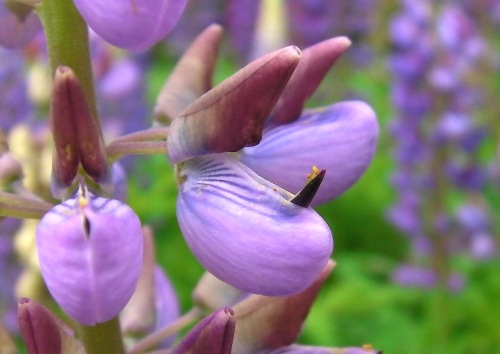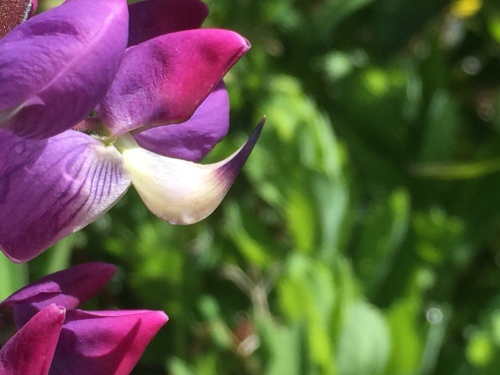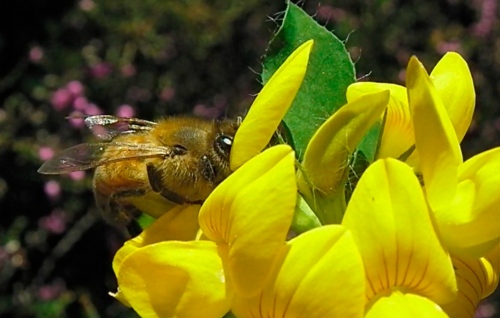
May 22, 2017…Lupines, planted from seed last year are bringing in the bees.
When I saw all the bees on the Lupines I got out the camera. I noticed the bees would land on the bottom petals (referred to as ‘wings or sails,’). They would separate and what looked like a spike (referred to as a ‘keel’) would rise up. When the bee lifted off, the petals (wings) snapped shut over the keel. I had to find out more, so I consulted with Darcy Grahek of “Go Native Nursery,” at Bandon High School. Darcy said that the stigma (female parts) AND the anthers (male parts) are contained within the keel.

May 30…Bee lifts off lupine blossom after rubbing it’s body on the ‘keel.’ Petals (or ‘wings’) will close over keel. Watching the video, you’ll see the stigma poking up through the tip of the keel after the bee lifts off.

By rubbing it’s body on the keel, the bee pollinates the flower when the anthers touch the stigma and the bee picks up pollen. For a more detailed explanation scroll to lupin in Sexual Reproduction in Plants, by Johny Thomas.

The ‘keel’

I pulled off the outside petals (referred to as sails or wings) of the keel, revealing the pollination parts of the flower. The female part is the stigma (longer). The male parts are the anthers which can be seen atop the (shorter) filaments. When the bee rubs it’s abdomen against the keel, the pollen on the anthers comes in contact with the stigma and pollination occurs while the bee is rewarded with grains of pollen. Win-win.
The Bird’s Foot Trefoil uses a similar type of pollination.

Many thanks to Gerard van Duinen of La Tabù, for giving me permission to use his delightful composition, Hijo #1, in the video.

